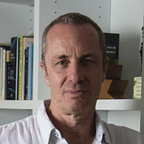In a journey of research, we can bring our attention both to the outside and to the inside. In the first case, we can speak of ‘outer research’, in the second case of ‘inner research’. It is clear that these two fields (and directions) of investigation are not separate, but it is not for this reason evident to understand how they are exactly connected, or connectable.
Building long-lasting bridges between the ‘inner world’ (which is not only inner) and the ‘outer world’ (which is not only outer) and creating true understandings, rather than mere fantasies, is not easy. For example, we are often tempted to use the ‘explanations pertaining to the inner world’ to elucidate the phenomena of the outer world or, conversely, the ‘explanations pertaining to the outer world’ to elucidate the phenomena of the inner world. I do not want to state with this that these attempts to operate some “transmigrations” of concepts and explanations cannot be advantageous, or even prove to be crucial, but it is good to understand that it is not at all obvious that they are, and that it is, therefore, desirable to always proceed with caution.
From a careful study of quantum physics, it seems to emerge, for example, that our physical reality is mostly non-spatial (the term that is usually used is ‘non-local’), therefore much larger than what would be expected on the basis of our ordinary…
